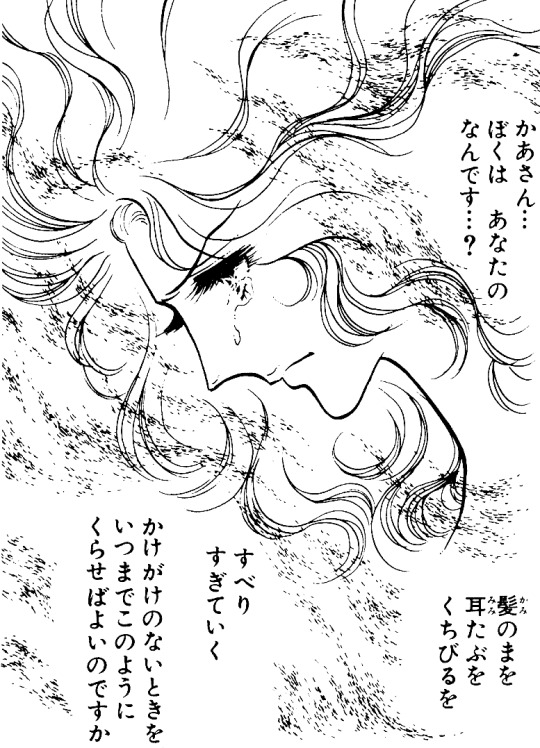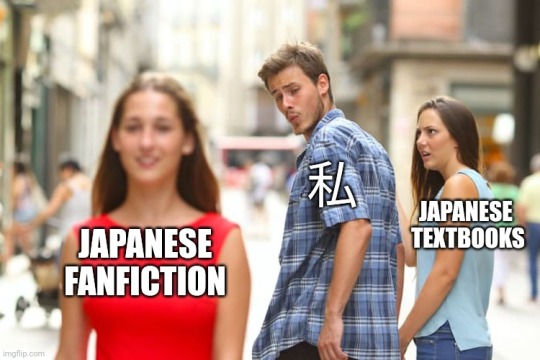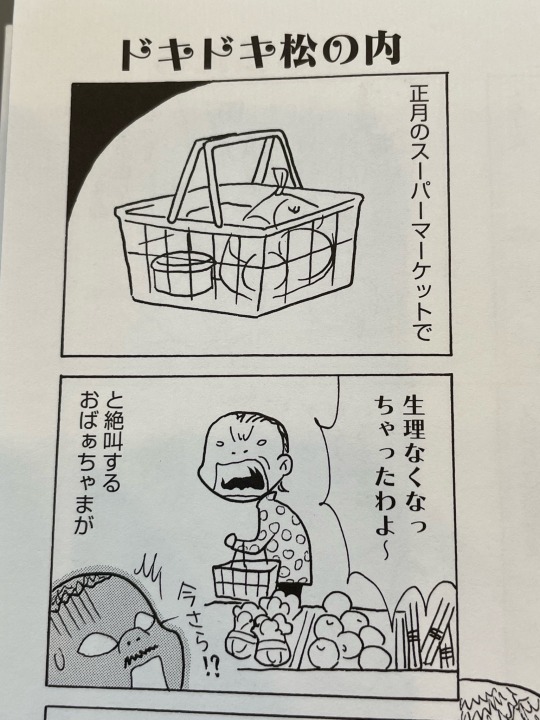Text
Katakana quiz: ロケラン
Can you guess what this is in English?
Hint below the cut!
It's two words smashed together (both shortened).
Extra hint: Here it is in a sentence.
俺は水鉄砲とかロケランを買いに行きます。
-
-
-
-
-
-
-
-
-
-
-
-
-
Answer: rocket launcher
3 notes
·
View notes
Text

What a pretty name! 香月 is usually Katsuki (as it is here), but in rare cases, it can also be Kazuki, Kōtsuki, Kōzuki, Kagetsu,or Kōgetsu. It can also be a female given name.
香 means smell (usually a pleasant aroma), perfume, or incense. It’s read か, かお.り, かお.る, コウ, or キョウ.
月 means moon or month. It’s read つき, ゲツ, or ガツ.
40 notes
·
View notes
Text



こんにちは! Slowpoke and I are finally challenging ourselves by learning and self-studying Japanese! Taking it slow day by day 🇯🇵
I don’t want to eventually rely on Google Translate to communicate with my Japanese audience on Instagram and Twitter especially. 私の間違いを正すことを恐れないでください! (Please don't be afraid to correct my mistakes!) 🩷
I actually started learning a week ago using free online resources, but I got Genki to have more structure. My notebook is currently filled with practicing Hiragana, along with copying repeatedly to gain muscle memory. I’m also using Tofugu’s mnemonics to even help remember.
I’ve always had trouble learning a different language, and I’m passively bilingual. I can understand and read 40-50% of Tagalog due to my immigrant parents but I can barely speak/write it (despite living in the Philippines 🇵🇭 briefly as an exchange student for a few months in 2020 until Covid!)
By the way, feel free to follow me on Instagram (both my art and Slowpoke-centric accs) and Twitter. 👀
13 notes
·
View notes
Text

オルフェウスの窓 (Orpheus no Mado), Riyoko Ikeda
16 notes
·
View notes
Note
Do you know anything on how useful the marugoto textbooks are for studying japanese? I know some people who use it in a uni course but they say the books are difficult to study outside that setting. But they are the books made by the japan foundation so they shouldn't be too bad probably?
Thank you for your ask!
I do not have any personal experience with the Marugoto books, so I asked around.
The feedback is that they are good study materials even outside of a course. They have beginner to intermediate books and they seem to be reasonably priced (particularly with the current dollar-to-yen exchange rate).
For the book version, the romaji is prominent in the beginner books, but in the online version there is an option to turn off the romaji. There are also English explanations in the beginner materials.
The series blends visual and audio with reading, writing, speaking, and listening which allows you to grasp all aspects of Japanese. You can get online support if you want to pay to have someone check your work. The grammar explanations are nicely formatted, and the stories and themes are interesting.
There is also an online course using Marugoto called Minato, which is free and you get access to the online books and materials, but you have to complete it in 6 months and then you lose access.
Both recommendations said that it was good for beginners, so I think it sounds like an excellent source for learning Japanese! Best of luck!
And thank you to those who gave me their feedback! ^.^
#study japanese#learning japanese#japanese textbooks#we had the A1入門 marugoto in our library and i had a look sometime#i liked the focus on explaining culture and customs together with and through the language#there was also frequent use of romaji which i did not like as much#but maybe thats just the first book
6 notes
·
View notes
Text


🧸☕️🎀📔
#reading in japanese#handwritten japanese#japanese books#japanese textbooks#study japanese#learning japanese
18 notes
·
View notes
Text
What a great resource! I didn't know about Renta but have added it now to my link collection :) Thank you so much for sharing!
Here's the link to the manga above btw. This volume can be read for free until May 9th!

If anyone is interested in checking out the manga for Tsukutabe in Japanese, the first volume is currently available for free on Renta and the rest are 50% off 🥞 The language isn't very complicated, so if there are any Japanese learners in my followers, it's good reading practice!
#reading in japanese#日本語#japanese books#manga in japanese#作りたい女と食べたい女#free japanese reading resources#free japanese manga
28 notes
·
View notes
Text
reading demon slayer: chapter 16 name breakdown
the last chapter of volume 2 has 2 names--how fitting. i don't believe the other demons that tanjirou has fought up to this point have had names, so this is a special occasion!
first we are given the name of the male demon,
矢琶羽
read as やはば. 矢 (や) means arrow, obviously a nod to yahaba's blood demon art. 琶 (は) is mostly found in words relating to the 琵琶 (びわ), which is a type of japanese string instrument. i think the inclusion of this kanji is a reference to the 琵琶法師 (びわほうし) of old. they were street performers, often blind, who played the biwa and recited poetry to make money. they also frequently dressed in buddhist garb.
yahaba isn't blind, per se, since his eyes are usually just on his hands, but he certainly looks the part. and his chunky necklace reminds me of buddhist mala, or prayer beads. many websites say yahaba's necklace is just a pearl necklace. however, i have not found a source to back up that claim, so i think i can speculate here.
i will note that mala usually have 108 beads, and yahaba's necklace is never pictured with more than 10 beads. but sometimes mala can be smaller. these smaller versions typically use factors of 108 as the total number of beads, and a factor of 108 is 12. with this knowledge i believe it is safe to assume that yahaba's necklace is meant to have 12 beads (perhaps plus one more, the mother bead) and the remaining beads are simply not drawn because they are obscured by his neck.
a 12-bead necklace would also be symbolic of the twelve demon moons, of which yahaba and susamaru claim to be members. if there is indeed a 13th mother bead, that could symbolise kibutsuji himself, as the father of all demons. but i digress.
the third character in yahaba's name, 羽 (ば), can mean feather or wing. it is also used as a counter for certain small animals (e.g. birds and rabbits). when paired with 矢, as in 矢��� (やばね), we get a word meaning arrow feathers. this is probably the reference the author intended to make.
unfortunately yahaba's name doesn't make a neat sentence or phrase, but it does convey his powers and has a historical reference, so that's cool too.
after yahaba, we are given the name of the female demon,
朱紗丸
read as すさまる. you might already recognize the third kanji, but hold on! we'll get there in a minute. the first character 朱 (す) generally means red. it can specifically refer to a cinnabar, vermilion, or scarlet color. susamaru's orange eyes, kimono, and red-orange tipped hair reflect this part of her name.
紗 (さ) means silk gauze, and shows up in words regarding delicate fabrics like silk or gauze. it is also used as ateji in words about thicker fabrics like felt, chintz, and wool. 丸 (まる) means circle. if you recognized it from the start, nice! traditional temari are said to be made of fabric scraps from kimono and other household items, so a temari could be thought of as a fabric ball--a 紗丸.
that means susamaru's name is literally scarlet fabric ball. and i mean, her temari do have red on them. her and yahaba's names are very similar in that they both allude to their powers and parts of their designs. i expect we'll see this pattern repeated in the naming of future demons, but i may be surprised.
i believe that's all for this chapter's name breakdown! i especially enjoyed researching and writing the part about yahaba's necklace. i hope you did too. thanks for reading, and please look forward to the next posts! 読んでくれてありがとう!次の投稿を楽しみにしてください!
#reading in japanese#study japanese#learning japanese#日本語#manga in japanese#analysis#demon slayer#鬼滅の刃
3 notes
·
View notes
Text
2K notes
·
View notes
Text
beginner's book club
I just found out that the wanikani beginer's book club is starting Frieren and I've really enjoyed the anime so far so I think this would be so fun! I love the wanikani book clubs, they make reading so much easier. I'm a bit behind because the're already starting week 1 but I think I can be caught up by the end of the week. Exciting!

#reading in japanese#japanese books#manga in japanese#japanese book club#japanese bookclub#free japanese reading resources#the bookwalker promotion is only valid until april 30th!#start now :D
28 notes
·
View notes
Text
Today I read
暗黒デルタ Ch. 4 (For free!)
Source:
Vocab new to me:
荒野 (こうや )- Wilderness
虚無 (きょむ) – Nothingness
手のかかる (てのかかる)– Troublesome (person) Laborious (Task)
枯渇 (こかつ)- Drying up, running out
返済 (へんさい) - Repayment
7 notes
·
View notes
Text
Noraneko Gundan aiueo
New item:

Shelf: 811.5 KUD (@ children's book section)
Noraneko Gundan aiueo.
by Kudō Noriko.
Tōkyō : Hakusensha, 2017.
ISBN: 9784592762096
[24] unnumbered pages : colour illustrations ; 21 x 21 cm.
(Kodomoe no ehon).
Revised and enlarged of the supplementary content of a bimounthly magazine "Kodomoe" 2017 February issue.
Text in Japanese, hiragana and katakana only.
4 notes
·
View notes
Text

Friendship with genki has ended - pixiv novels is now my best friend 🤝
#reading in japanese#japanese fiction#go for it!#i've seen learners being very successful with this approach
109 notes
·
View notes
Text
Katakana Quiz: グラビアアイドル
I need to steal the katakana quiz from @chouhatsumimi once again ^^
I encountered this word while reading ビブリア古書堂の事件手帖1 and had to look it up. This is the context:
なんとなくグラビアアイドルみたいなポーズだ。
Hint and answer under the cut!
Hint: This word is actually two words and you probably know the second part: アイドル. Now what is the first?
.
.
.
.
.
グラビア= gravure + アイドル= idol
This is a type of model that would be featured in the ads on the first few pages of a magazine and sometimes the cover page. Often showing a lot of skin, so this has erotic connotations even.
I would not have guessed グラビア to come from gravure...
5 notes
·
View notes
Text


「本日もおひとりホモ」
#reading in japanese#日本語#oh no#生理=period / menstruation#セリ=japanese parsley#sometimes older people use different pitches with some words#日本語の学習者も気を付けないとね笑
10 notes
·
View notes

